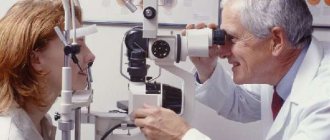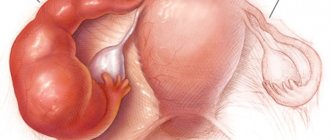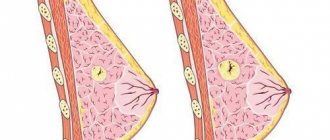A variety of spinal problems are quite common in modern society. Back pain, curvature of the spine, headaches and dizziness, problems with the legs and changes in the function of the pelvic organs - all this is often a consequence of dysfunction of the spine. With these problems, people turn to a neurologist, neurosurgeon, orthopedist, chiropractor, physiotherapist, kinesiotherapist... What kind of doctor is a vertebrologist? What does it treat and what symptoms should I treat? Each of them uses a strictly defined set of diagnostic and treatment techniques.
Often, in order to receive a comprehensive effect, the patient has to switch from doctor to doctor. At the same time, there is a vertebrologist - a specialist who deals with all pathologies associated with the spine.
What complaints are addressed to a vertebrologist?
A vertebrologist is your doctor if you are concerned about the following symptoms:
- headaches, migraines;
- tinnitus, crunching, dizziness when turning and tilting the head;
- tingling, numbness in fingertips, back;
- stiffness and curvature of the spine;
- impaired sensitivity of the limbs of the arms and legs, muscle weakness;
- pain in the cervical region, chest, back, lower back.
Vertebrology also studies subtle signs of spinal diseases: pain in the lower abdomen, problems with digestion, urination, sudden surges in pressure that are difficult to correct with medication.
Vertebrologist - who is he?
Previously, many specialists were involved in the treatment of various spinal diseases, working closely with each other. The patient had to waste time searching for the right doctor for additional consultation or receiving the necessary treatment. Contacting a vertebrologist will allow people with spinal diseases to receive a comprehensive examination and qualified, comprehensive assistance in one place. After all, a vertebrologist may have several certificates - in neurology or neurosurgery, orthopedics, traumatology, manual therapy and other related specialties. Such a doctor is able to immediately assess all manifestations of changes that have occurred in the spine, which will significantly improve the quality of medical care provided.
When to contact
There are many symptoms that indicate damage to the spine. And any sign can serve as a reason to contact a vertebrologist. Commonly reported complaints include:
- headaches predominantly in the occipital region, not associated with increased blood pressure;
- attacks of dizziness after sleeping in an uncomfortable position and sometimes when turning the head;
- unstable blood pressure levels;
- pain in various parts of the spine (neck, between the shoulder blades, lower back, sacrum) of an acute or chronic nature;
- pain in the shoulder and arm, numbness and weakness in the arm;
- girdle pain (along the intercostal spaces) in the chest area;
- pain radiating to the buttocks, thigh, under the knee;
- weakness and numbness in the leg;
- numbness of the perineum;
- disturbance of urination and defecation;
- limited mobility of the spine, the appearance of pain and crunching in it when moving;
- sideways curvature of the spine (scoliosis), poor posture, appearance of a hump, smoothing of the lumbar curve;
- frequent pain in the heart area that is not relieved by antianginal drugs and is not confirmed by an ECG picture.
You can contact a vertebrologist at any stage of the development of the disease, with existing results of any examinations, or only if you suspect that you have a spinal lesion.
What cures
A doctor of this specialty identifies and treats damage to the vertebrae, intervertebral discs, joints between the processes of the vertebrae, changes in the tone and condition of the muscles along the spine (paravertebral), infringement of blood vessels and nerve structures.
A vertebrologist diagnoses the following conditions:
- protrusion and herniation of the intervertebral disc;
- spondylosis;
- spondylolisthesis;
- spondyloarthrosis;
- vertebral instability;
- vertebrogenic pain syndrome of various levels, acute or chronic;
- muscular-tonic syndrome;
- vertebral artery syndrome;
- radicular syndrome, cauda equina syndrome;
- spinal canal stenosis;
- vertebral developmental anomalies;
- consequences of spinal injuries;
- thoracic kyphosis, scoliosis and kyphoscoliosis;
- fractures and dislocations of the vertebrae;
- osteoporosis;
- infectious lesion of spinal tissue.
In vertebrology, an integrated approach is used, when the impact is aimed not only at the effect, but also at the cause. It is important not only to relieve pain, but also to find out why it occurs, to clarify all secondary changes in paravertebral tissues, and to assess the condition of the entire spine as a whole. After all, disturbances at one level inevitably lead to disruption of the functioning of neighboring parts of the spine.
When a local restriction of movement occurs, the biomechanics of the entire spine changes, the load on the vertebrae above and below becomes uneven, bones, discs and ligaments undergo degeneration. Compensatory mechanisms are activated, which themselves can cause any complaints. For example, with kyphosis or scoliosis of the thoracic region, the lumbar spine changes again. Tension and distortion arise in it.
Therefore, the vertebrologist evaluates the work and condition of the entire spine , and not just the area that is responsible for the occurrence of the main symptoms.
What to do if there is no vertebrologist in the clinic
If there is no vertebrologist in your small town or village, you should first seek help from a therapist. He will establish a preliminary diagnosis and give a referral to the nearest clinic or diagnostic center for a consultation with this specialist.
Who is a vertebrologist and what does he do? Another name for a specialist in the treatment of the back and spine is a vertebroneurologist:
- performs the functions of a number of specialists - neurologist, orthopedist, traumatologist, etc.;
- applies modern diagnostic and treatment methods;
- gives the patient a chance for full recovery after the most severe diseases and injuries of the supporting system.
The patient may be referred to a vertebrologist by a surgeon, traumatologist or orthopedist, as well as other specialized specialists (for example, a neurologist or neurologist) if they suspect a connection between the symptoms the patient presented with and a spinal disease.
Treatment methods
To prevent spinal diseases, vertebrologists recommend, first of all, to sit correctly at the computer. Since people spend most of their day sitting, their back health is directly related to their posture. Your doctor may also advise you to pay attention to your sleeping position—it is often believed that sleeping on your left side is healthier.
- Drug treatment - may involve taking supplements (for example, glucosamine and chondroitin) or taking injections.
- Reflexology - identifying secondary symptoms of spinal disease.
- Exercise therapy is therapeutic physical culture or physiotherapy.
- Thermotherapy - heating.
- Myofascial release - self-massage using a foam roller.
Exercises for back pain
Pain in the lower back and lower back is one of the most common consequences of performing basic exercises with a barbell. Because significant vertical stress is placed on the spine during squats and deadlifts, even an accidental twist or bend to the side can cause strain on the muscles and ligaments. And the greater the working weight in the exercise, the more dangerous the consequences can be.
Previously, Fitseven published a set of exercises for lower back pain. These exercises are designed to stretch tight muscles and develop spinal mobility. When performed correctly and regularly, they strengthen the deep muscles of the spinal column, which not only improves posture, but also helps you train more efficiently.
***
A vertebrologist is a doctor who deals with back health, as well as the effect of spinal injuries on the disruption of various internal organs. Among the key treatment methods, vertebrology considers massage and exercises to strengthen the spine.
How does an appointment with a vertebrologist proceed (examination, diagnosis, treatment)
We have already dealt with the question of what kind of doctor this is – a vertebrologist. Now we will find out what is within his competence and how the consultation proceeds.
What does the doctor do at the appointment:
- Conducts a survey and inspection.
- Prescribes an examination (if the patient does not have any laboratory or instrumental studies).
- Determines methods of conservative therapy.
- Develops a detailed individual treatment and rehabilitation program.
- Gives recommendations that will help maintain the results of treatment, prevent the development of complications and exacerbations.
Inspection and survey
The vertebrologist makes a preliminary diagnosis after examining and interviewing the patient:
- the doctor listens and writes down the patient’s complaints;
- asks leading questions, trying to establish the cause of the pathology, determine the stage of the disease, risk factors that affect the pathology;
- presses on especially painful points, palpates the spine;
- conducts testing, asks a person to perform simple movements (squats, bending forward and backward, swinging arms, legs, etc.);
- studies data from preliminary medical examinations and the opinions of other specialists.
Back examination by a vertebrologist
Diagnostics
If the diagnosis needs confirmation or clarification, the specialist may prescribe:
- radiography (pictures in several projections);
- Ultrasound (ultrasound examination of internal organs);
- CT or MRI (computer and magnetic resonance imaging of soft tissues, cartilage);
- blood tests for antinuclear antibodies and rheumatoid factor (for autoimmune diseases).
If there is a need for additional research, the vertebrologist prescribes:
- Puncture and analysis of cerebrospinal fluid.
- Myelography and contrast discography (studies of the spine and intervertebral discs using contrast agents).
- Electrospondylography (the study resembles an ECG).
Cerebrospinal fluid puncture, which may be prescribed by a vertebrologist
Spinal diseases - prevention
Preventive measures help to avoid spinal diseases.
Vertebrologists recommend:
- Maintain optimal body weight - excess weight destroys the vertebrae, joints, and intervertebral discs.
- Distribute physical activity evenly - overloading the body is fraught with injuries and other problems.
- Adhere to a balanced diet - with a lack of vitamins and mineral elements, all organs and structures of the body suffer.
- Warm up after being in one position for a long time and be sure to do exercises for your back.
- If pain or discomfort occurs, consult a doctor rather than self-medicate.
Spinal diseases studied and treated by vertebrology
- Herniated intervertebral discs.
- Degenerative pathologies of the spine.
- Deformations and abnormalities of the spine.
- Spinal canal stenosis.
- Tumors of the spinal cord and spine.
- Consequences of damage to the spine and spinal cord as a result of various injuries.
- Various back pain of unknown etiology.
- Frequent and severe headaches.
- Cauda equina syndrome.
- Scoliosis.
- Osteochondrosis.
If a child has problems with the spine
Since back diseases can appear at absolutely any age, a pediatric vertebrologist works separately.
Even newborn babies can be patients of such a specialist.
He monitors any changes in the structures of the spine (intervertebral discs, bone tissue of the vertebrae, ligaments, muscles, joints, spinal cord).
Previously, if a child had problems with his back, he was taken to a pediatrician, who then referred the little patient to a surgeon and neurologist. In difficult cases, the child had to be treated simultaneously by an orthopedist, a neurosurgeon and a neurologist.
Now it is much more convenient to contact one specialist who will definitely prescribe comprehensive treatment.
People most often consult a pediatric vertebrologist with kyphosis and scoliosis. More complex, but decisive problems are birth or congenital spinal deformities and benign/malignant vertebral tumors.
Preventive measures help to avoid spinal diseases.
Where are there vertebrology centers in Russia?
As the name suggests, vertebrology is a branch of medicine that deals with the study of the spine and all problems associated with it.
Pathology of the spinal column, nerve roots and spinal cord cannot be treated by one doctor. This problem is at the intersection of many specialties:
- neurology;
- orthopedics;
- traumatology;
- rheumatology;
- therapy;
- endocrinology;
- oncology.
A doctor in any of the above specialties in his practice encounters pathology of the spine and adjacent structures - as the underlying disease, complications or long-term consequences. But why was it necessary to single out a new specialty – vertebrology?
The fact is that diseases of the musculoskeletal system and the spine in particular have become a very pressing problem in recent years. These pathologies are not only getting younger, they are found among all groups of the population and much more often than some 40–50 years ago.
More than 90% of people at least once in their lives have experienced back pain, stiffness, crunching in the back, dizziness and other unpleasant symptoms associated with damage to this area. That is why a new direction in medicine and vertebrologists have become in demand.
A doctor working in this field eliminates problems that arise due to the curvature of the spinal column. In his competence is the displacement of internal organs and changes in their functionality - neurologists often do the same.
The connection between the two specializations of medicine is that the spine is an organ that regulates all processes in the body. Vertebrology studies the hypothalamic-pituitary system, which is directly related to the nervous system. The doctor's area of interest includes the spinal cord, an organ involved in the transmission of nerve impulses. It also gives off radicular nerves, which are divided into motor and sensory axons. Ends branching off from these nerves branch in different directions.
This structure of the nervous system allows the brain to send impulses to different parts of the body and receive a response from them. If these connections are disrupted, a neurologist will help you, and if the incorrect functioning of the central nervous system is associated with deformations and injuries of the spinal column, neurovertebrology works. Doctors of different specializations often conduct treatment together.
People think that only in Moscow they can get help, but this is not true. Vertebrology centers are open in all major cities of our country and are in all neighboring countries. The leaders in the popular rating are:
- Doctor Afaunov Asker Alievich from Krasnodar. People turn to him after injuries and for congenital pathologies. Helped hundreds of people.
- Alaverdyan Ashot Nikolaevich from St. Petersburg. His main area of work is chronic and destructive pathologies of the spinal column.
- Grigoryan Yuri Alekseevich is a neurovertebrologist from Moscow, a practicing surgeon. According to reviews, it will cope with the most complex pathologies.
- Kirilenko Sergey Ivanovich from Gomel, he has already accounted for more than a thousand recovered patients, whom doctors had previously refused.
All methods of treating spinal diseases are divided into operative and surgical. Currently, all surgical interventions for diseases of the spine are performed under local or general anesthesia. In this case, preference is given to minimally invasive techniques. Despite the fact that they are much more complex than traditional surgical techniques, they have many advantages - they are less traumatic and easier to tolerate for patients. Therefore, when interested in reviews of a vertebrologist, do not forget to check whether the doctor knows the methods of endoscopic surgery and other minimally invasive interventions.
One of the modern methods of treating vertebral body fractures is vertebroplasty. Its essence lies in the fact that the fracture site is sealed with a special glue. The glue is injected into the affected vertebra through a puncture needle under ultrasound guidance. No cuts are made. Vertebroplasty is often performed on an outpatient basis, because... it does not require general anesthesia, the operation is not accompanied by bleeding, and the risk of complications is minimal.
Conservative treatment methods in vertebrology include traction, massage, physiotherapy, and manual therapy. Unfortunately, in adult patients these methods most often do not achieve complete cure of the disease. Therefore, they are used as a means of eliminating pain in cases where surgery cannot be performed for some reason.
Manual therapy for diseases of the spine is used quite often. This treatment method is highly effective. But only experienced doctors can perform it. Incorrectly performed manual therapy will not only bring no benefit, but can cause deterioration in health. If this method of treatment is recommended to you or your loved ones, then do not hesitate to inquire about the qualifications of the doctor, whether he has the necessary diplomas and licenses, skills, and ask for reviews about the vertebrologist and the clinic, which in most cases can always be found on the Internet.











